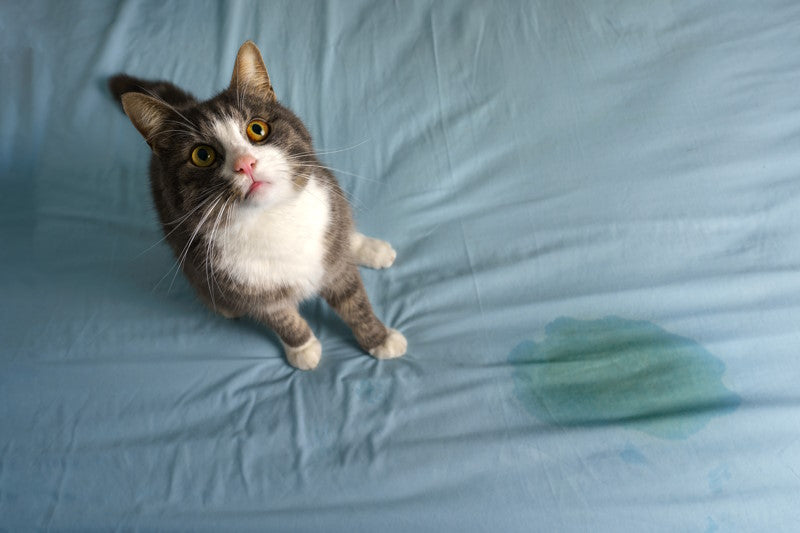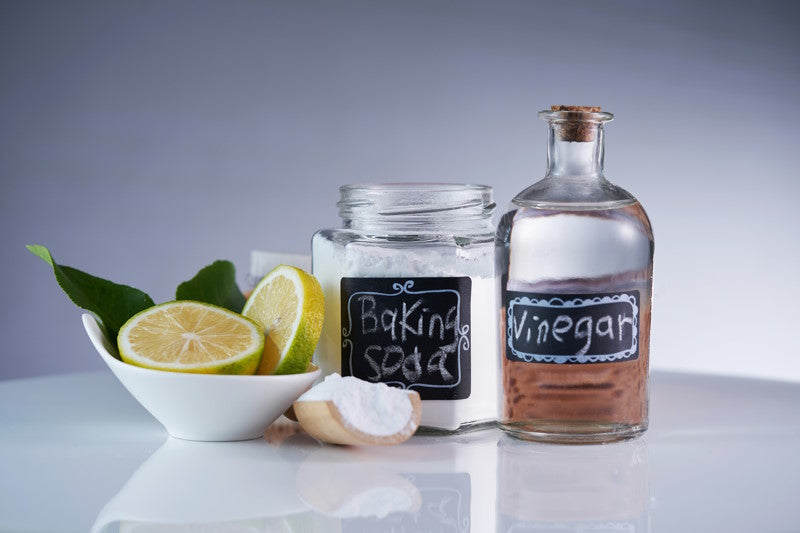Odors are powerful chemicals ready to react with anything, up to and including the sensitive nerves in your nose. Removing them often requires equally powerful chemicals to dislodge, destroy, or cover them up. An air purifier can effectively trap and destroy these particles, leaving your air fresher and cleaner.
In addition to a purifier, here is a toolbox of different techniques to get smells out of the air and out of your nose.

Lemon juice to remove smells
Citrus-y fruits like lemon, lime, and orange have potent and distinct smells that can be used to remove or at least cover up persistent stinky odors. Citric acid can neutralize alkaline odors and break down built-up organic residue.
- Cut a lemon in two halves and place them near noses but out of sight.
- Microwave a bowl of lemon juice to cancel lingering food smells.
- Cut up a lemon and put it in the garbage disposal with a scrubber like ice or salt, the lemon eats the smells and the scrubber scours away the source.

Vinegar to remove smells
The citric acid in citrus is great, but vinegar is acetic acid, which is stronger but not so strong that it’s dangerous to anything but smells and bacteria. Vinegar is nowhere near as pleasing to the nose as citrus so while it does work great to neutralize odors it’s not as good for just leaving out. However, it doesn’t last long in the environment so if you don’t expect company then spray it around with abandon.
- Fill a spray bottle with vinegar and spritz areas where smells are persisting.
- Boil vinegar on the stove so it evaporates and spreads throughout the space.
- Soak a sponge or old piece of bread in vinegar and leave it in a trashcan overnight to de-stink.
- Soak a piece of balled-up paper in vinegar and leave it in drawers to soak up musty smells.
- Poke some holes in the top of a used container, fill it with vinegar, and set it out in a stinky room to suck up the odors and kill them with acid. A bowl of vinegar will also work.
- Wipe down stinky spaces with vinegar to remove stuck smells. You can add baking soda so it foams and penetrates the material better.

Baking soda to remove smells
Sodium bicarbonate, aka baking soda, is not an acid but rather a base. Organic molecules like smells usually have both acid and base components, so they can be neutralized by reacting with either. Baking soda can react with and tarnish aluminum, so use caution applying it directly to metal surfaces.
- Put baking soda in the back of the fridge, just remember to replace it every few months.
- Sprinkle baking soda in the trashcan if it’s plastic, or place it in an open container or porous bag in metal trashcans.
- Rub baking soda into rugs to absorb mold or musty smells, then vacuum it out after a few hours. This works for any smelly fabric like drapes or upholstery.

Enzymatic cleaners
These are special cleaners that target specific chemicals. For very persistent organic odors an enzymatic cleaner may be necessary. They are always available in pet stores but can be found in most grocery stores. Each enzymatic cleaner specializes in different odors, so be sure to get one that attacks what is bothering you.
- Cat urine contains more uric acid than other urine so smells worse and may require an enzymatic cleaner.
- Vomit often contains smells from many sources so a single option might not be enough and an enzymatic cleaner will work better.

Other odor removers
In addition to killing smells with chemistry, you can also remove them by capturing them. Activated carbon filters are most well-known for this, but there are a few others you might not be aware of.
- Used coffee grounds are acidic and have a lot of surface area to react with smells, and can be placed anywhere to remove odor and add the pleasant smell of coffee. Just don’t let wet grounds hang out for long enough to get moldy.
- Kitty litter is unsurprisingly designed to remove odors. It’s full of clay and other substances that odors will stick to, even if you don’t have a cat.
- House plants and their soil both absorb odors and don’t need to be changed or replaced like any of the non-living options here. Just don’t overwater, if mold grows it can add its own stench. Also, keep in mind that air purifiers are still more powerful when it comes to indoor plants vs. air purifiers.

Don’t forget the washing machine
The clothes washing machine can fall down on the job a bit and be a source of stink. If your clothes smell musty and don’t have any mildew growing on them, it could be fungi or bacteria living in your washing machine causing the problem.
- Be sure the machine is draining and drying completely between each cycle so bacteria or mold don’t have standing water to live in.
- Follow the manufacturer’s instructions to use bleach for cleaning. This may take more than one shot before everything is dead so the smell may persist for a few weeks.
- Alternately, put two cups of baking soda in and run it empty for a light scrub, followed by a hot water wash.
- Clean the door, dispensing trays, and any other nooks or crannies with vinegar.
These tools are readily available for all of us and relatively inexpensive to keep on hand. Keep an eye on this blog, we have a lot more tips to share about what is going on in your air.







